Minoru Park on Lulu Island
(now Richmond) was the site of the earliest heavier than
air flight in British Columbia. In March of 1910, an
American, Charles Hamilton, made several demonstration
flights, including a cross-country to New Westminster
and back.
Return to
map
|
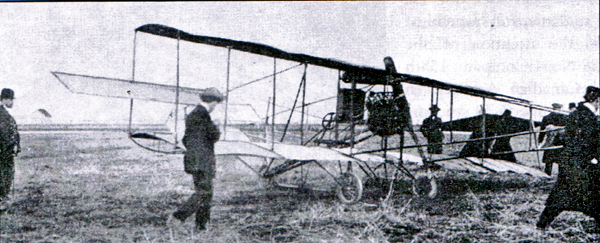 |
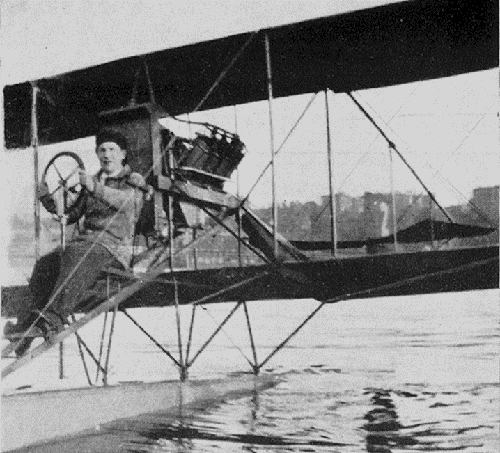 |
The
following years saw more flights at the same location,
notably by �Billy� Stark in his Curtiss Pusher. At the
start of the First World War, Stark offered training for
aspiring aviators under the auspices of the Aero Club of
BC. Over the course of the war, training activities were
relocated several times, finally ending in 1916.
|
The
Hoffer brothers�James and Henry�designed, completed and
flew their H-1 floatplane on Burrard Inlet in 1917. A
replica of this aircraft is part of the BC Aviation
Museum collection.
|
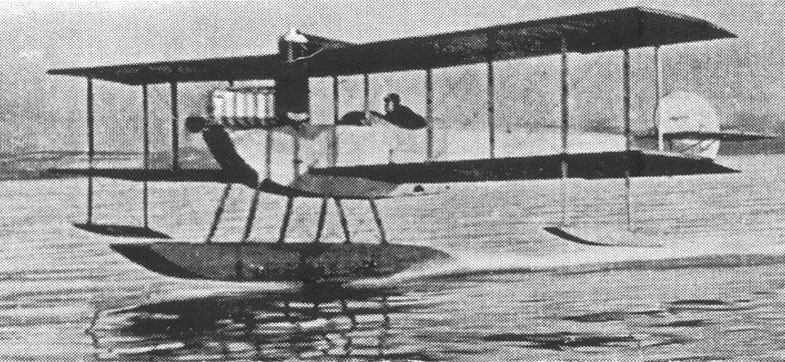 |
Their
success inspired subsequent designs that would later result
in the creation of Boeing Aircraft of Canada in partnership
with the US-based Boeing Airplane Company. The
Hoffar/Boeing
Coal Harbour manufacturing plant produced several models up
to 1930. This sleek H-2 is an example, unfortunately one
that met an untimely end in 1918 when the engine lost power
and the aircraft spun into the home of Dr. Farrish at the
corner of Bute and Alberni Streets. The pilot was happily
uninjured, but the aircraft was not so lucky.
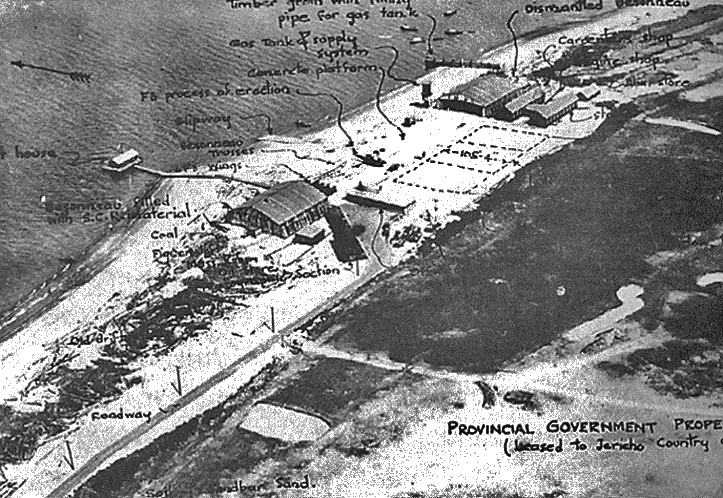
. |
For several years from the time
of its construction in 1920, Jericho Beach (Canadian Air
Force) Air Station was the only official aviation presence
and the site of coastal operations as well as flying boat
training.
Back to top of
page
Return to
map |
In May 1928 the Aero Club of
BC and BC Airways convinced the Vancouver Council to set
aside land near Lansdowne Racetrack on Lulu Island for a
temporary airfield. The second aircraft to land after
the formal opening on July 24 was this Ford Trimotor
carrying several dignitaries. Lansdowne Field became
the base for the Aero Club of BC as well as several
commercial operations including the Sprott-Shaw School
of Aviation, Commercial Airways Ltd. and Dominion
Airways.
|
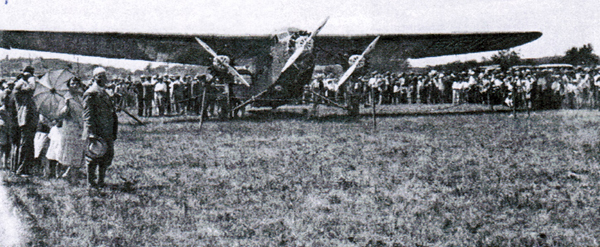 |
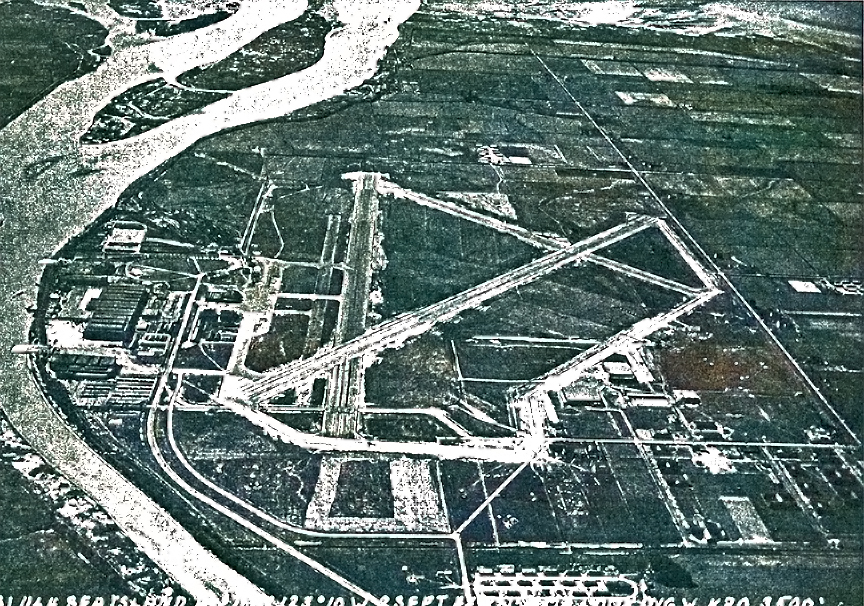
. |
Lansdowne field suffered from
major issues, however, and when Charles Lindbergh refused to
land in Vancouver, the city undertook to develop a �proper�
airfield. Sea Island was identified as the best choice for
the improved facility. Vancouver Municipal Field opened on
July 22, 1931 with, once again, the Aero Club of BC as its
main tenant. Scheduled air service from Seattle was
inaugurated in 1934 with United Airlines making two flights
daily. The weather reports were crude, initially provided
from personal observation: �If you can see Mount Baker,
it�s going to rain. If you can�t see Mount Baker, it�s
raining.� Facilities improved as use of the field by
commercial operators increased; a radio range allowing
instrument landings was operational by the end of 1937, and
lighting installed in 1938 for night landings.
|
|
No. 11 (Army Cooperation)
Squadron was formed at the Vancouver Municipal Airport on
October 5, 1932 and became operational in October 1934, the
first military presence at Vancouver Municipal Field. With
the declaration of war on September 10, 1939 the airport was
handed over to the Department of National Defense for the
duration, becoming RCAF Station Sea Island. Over the course
of the war, Sea Island was the base for a number of Bomber
Reconnaissance, Fighter, Artillery Cooperation, Transport,
Communications and British Commonwealth Air Training Plan
Squadrons. This 1941 photo shows aircraft and trainees at
No. 8 Elementary Flying Training School.
Return to
map |

. |
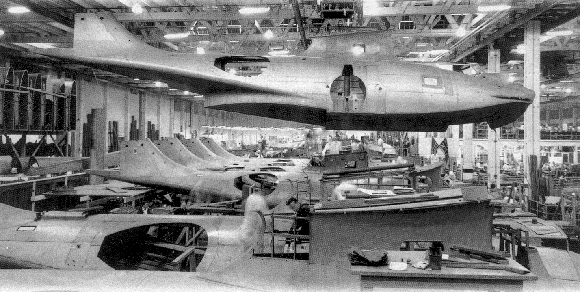 |
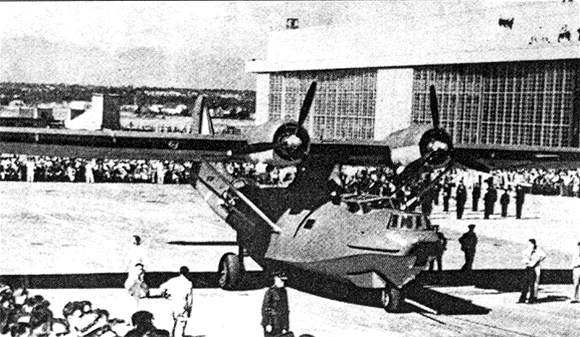 |
Boeing
Aircraft of Canada relocated its manufacturing plant
from Coal Harbour in 1937, constructing a modern plant
at Sea Island. It was contracted in 1938 to build 17
Blackburn Sharks for the RCAF, then moved on to
production of the PBY 5A amphibious Canso, delivering
the first on July 26, 1942. The photos show the
production line and the rollout of the first PBY from
the Sea Island plant. Until its closure in 1945, the
plant turned out hundreds of PBY Canso amphibians and
Catalina flying boats for the RCAF and US forces, as
well as parts for B-29 bombers. In the 1945 aerial
photo above, the plant is located next to the Fraser
River, where the seaplane base is presently situated.
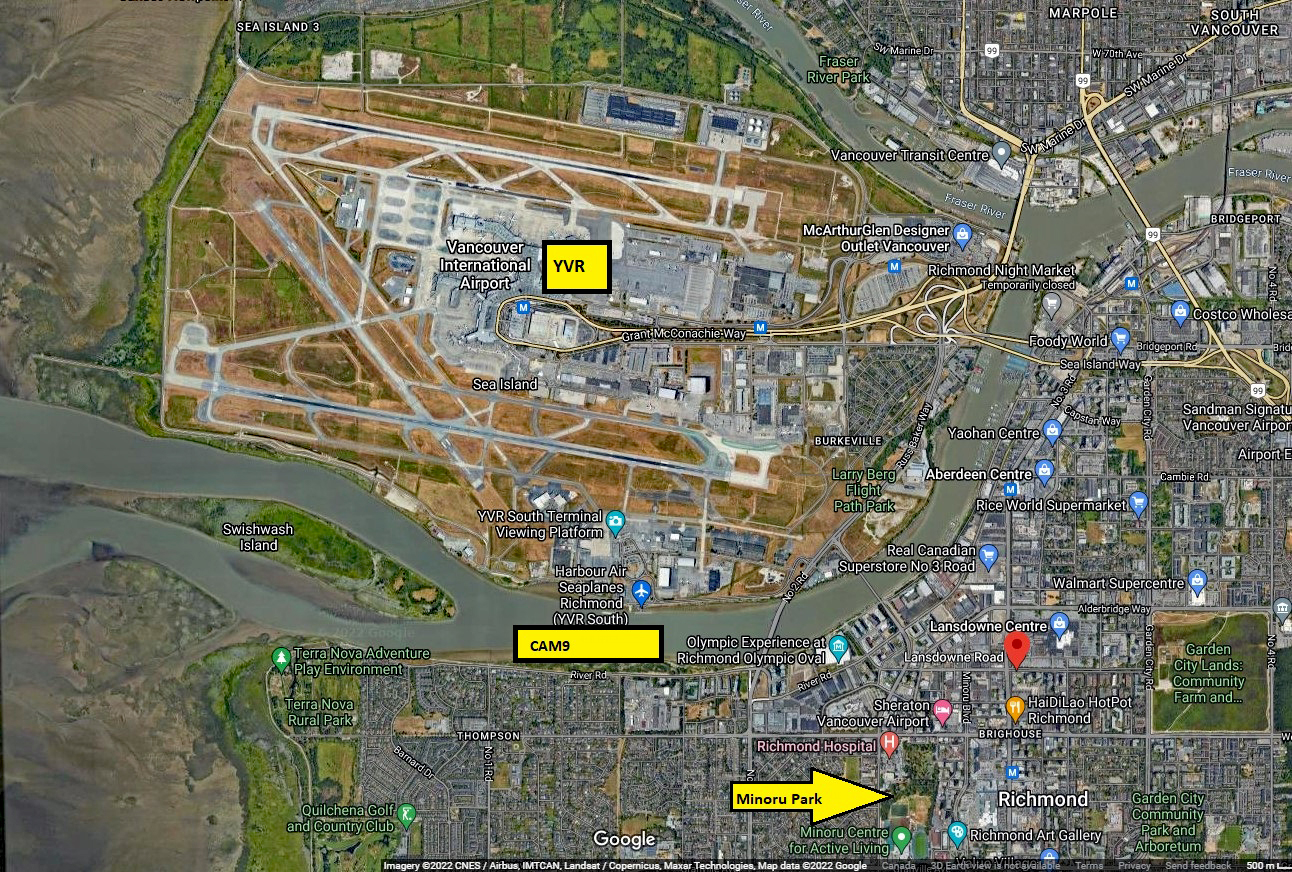
RCAF Station Sea Island was returned to the
administration of the City of Vancouver in 1948 and
the name changed to Vancouver International
Airport. The federal Department of Transport
purchased the airport from City of Vancouver and
began a significant long term improvement program.
The current main terminal, designed to handle jumbo
jets, was completed in 1968. The new International
Terminal section was opened in 1996 and the east
terminal, expanding the domestic side, was added in
the early 2000�s. Constant improvements have been
made on the air side as well to facilitate handling
of steadily increasing traffic flows. YVR, as the
airport has been branded, has developed into a major
transpacific hub, able to handle some 8 million
passengers and almost half a million flights
annually. It was voted Best Airport in North
America for the 12th consecutive year in
2021 (Skytrax World Airport Awards).
The
south terminal, part of the original pre-1968
terminal, is located adjacent to the floatplane
docks and is the main base for Pacific Coastal
Airlines and Harbour Air (2022). The Vancouver
International Water Airport (CAM9) is a short
distance from the south terminal, allowing
floatplanes to land on the south arm of the Fraser
River.
Back to top of
page
Return to
map
|
Note: Photos
courtesy Chris Weicht except for final aerial view courtesy
Google Maps
 �
British Columbia Aviation Museum Updated:
2023-01-16 �
British Columbia Aviation Museum Updated:
2023-01-16
|